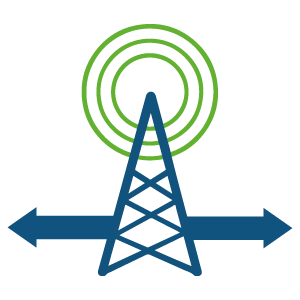What is a Smart Village
A Smart Village is a countryside area or small community that uses technology and innovation to improve its economic, social and environmental situation. It is a concept that focuses on improving the quality of life and well-being of rural residents through the use of modern technologies, while preserving the natural and cultural heritage of the community.
Compared to a Smart City, which usually has a high population density, a Smart Village has a lower population density and a closer sense of community. Smart Villages aim to maintain a rural way of life while integrating technology and innovation to address individual rural challenges.
In addition to community involvement and universal access to new technologies, sustainable development is a focus for many communities. Saving energy and resources, creating added value for the population and establishing sustainable agriculture can go hand in hand.

Practical example and IoT solutions for Smart Villages
Do you have questions about Smart Villages and suitable IoT solutions?
Contact us for expert advice on deploying and optimising IoT networks in rural communities.
When is a Smart Village project profitable for a municipality?
Lack of human resources
Remote monitoring allows staff to be deployed as needed rather than on a rota basis. The craftsman does not have to be on site for every activity.

Already existing IoT network
If an IoT network already exists, for example through the smart meter expansion, further intelligent solutions can be deployed on the basis of it.

Advancing digitalisation
Digitalisation does not stop at fast internet, sensor-based automations make a relevant contribution to digitalisation.


Young families and professionals
Affordable housing and space to spread out, this and an attractive location can attract this target group to move in.

Monitor environmental conditions
Whether it is the surrounding forest or the local body of water, information about the environment can be helpful.

Community in the village
IoT can be a component of participation within a community. An existing IoT network can then also be used for private projects.
What is the difference between a Smart Village and a Smart City?
People – Smart City
The city is more anonymous, digitisation projects tend to be communicated with classic marketing measures.

People – Smart Village
In rural areas, people are often strongly identified with their community and look very closely. This increases the work of communication and persuasion.
Coverage – Smart City
Smart City's have a higher media reach, the LoRaWAN network range is still a huge range of up to 2 km in cities.

Coverage – Smart Village
The long range of LoRaWAN can be fully utilised in rural areas, sometimes over 10 km. Therefore, the use of this technology in rural areas is ideal.
Human Resources – Smart City
Specialised positions, such as a contact person for IoT, are usually available. But even in cities, there tends to be too few technicians.

Human Resources – Smart Village
One employee often takes on several tasks, there is a lack of highly specialised technicians. LoRaWAN can support in many cases, such as automated remote monitoring.
Do you have questions about Smart Villages and suitable IoT solutions?
Contact us for expert advice on deploying and optimising IoT networks in rural communities.


